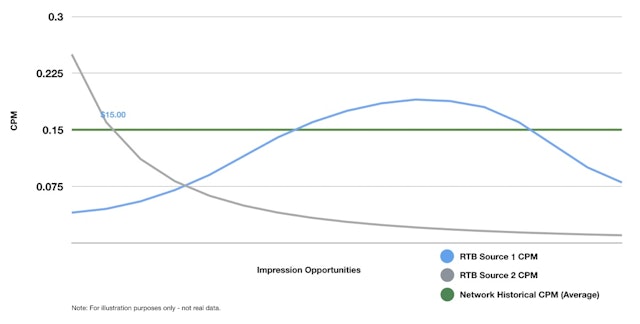In-app bidding will drive programmatic evolution in 2019
The mobile programmatic space is an exciting one to be in because of how quickly things evolve. As we head into 2019 the most important trend impacting this space is going to be the true arrival of in-app header bidding in scale into the ecosystem. While this is pretty old news in the web space, header bidding has not really made its way into the mobile app space. When it arrives at scale in 2019, several major changes will happen as a result, and it’s worth diving deeper into these due to the pervasive impact that header bidding has on any programmatic environment.

Noam Yasour, managing director, MoPub
First: what does header bidding mean for the in-app world? A true real-time unified auction means that publishers can maximize revenue for every single impression. But that’s not the end of the story — there are several other important impacts on both sides of the ecosystem.
More efficient auctions lead to better access to valuable supply
Header bidding helps reduce the complexity for publishers to manage their inventory and encourages the move from complex waterfalls (daisy-chain calls to demand sources one after the other in predefined set of priorities) towards a flat auction style with all demand sources, ad networks and demand-side platforms (DSPs), bidding in real-time into one auction.
The flatter auction style increases transparency, simplicity, and competition in the market — which we believe will reduce the need for negotiating side deals that carve out highly-performing supply from open marketplaces. As a result, programmatic buyers can expect much better access to supply across all levels of performance and quality, such as impressions that are earlier in the user’s session.
Increase in supply increases the importance of SSPs
Header bidding enables SDK-based networks to compete and buy programmatically at the impression level. However, each one of these networks also operates their own RTB exchange in the backend that usually competes or backfills their own network demand. As a result, DSPs are going to experience an increase in overall ad requests but not necessarily an increase in impression opportunities.
Imagine that a DSP receives an ad request from a supply-side platform (SSP) such as MoPub, but at the same time receives another ad request for the same impression opportunity from three different SDK-based networks that are competing in the header bidding auction. In essence, this duplicates ad requests for the exact same impression opportunity. This duplication will inflate the overall number of ad requests that DSPs have to process, leading to an increase in bandwidth, CPU, and data storage costs without actually increasing the overall number of served impressions, which is what DSPs get paid for.
As we move into 2019 there'll be a number of factors driving an increased availability of supply beyond in-app bidding, such as the fact that more app publishers are using in-app ad monetization to complement their existing monetization strategy. It’s going to be very important that DSPs get much smarter in deciding which supply sources they continue to work with so costs don’t go out of hand. Bidding strategies must remain cost-effective and take into consideration questions such as price, quality and overall performance.
SSPs will be a critical factor in helping DSPs make the right decisions, and they can do so through enabling more transparency to DSPs at the request level. That transparency is important for both brand and performance campaigns for different reasons. For example, DSPs can greatly improve the performance of app install campaigns by understanding the session depth of each user and bidding higher at the start of the session where the user is more likely to install another app. Very few platforms have historically had the ability to access the session depth but buying programmatically through ad management platforms that offer more than simply ad exchange functionality is going to be very interesting.
In-app bidding leads to more effective pricing
In the real-time bidding space, each and every impression is sold separately and the highest bid wins. This allows for efficient and streamlined pricing. However, in today’s in-app space, each impression-level bid from RTB platforms (DSPs) usually has to compete against historical CPM averages that are coming from SDK-based ad networks. With the adoption of in-app bidding, the networks will be able to transmit a real-time price into the auction instead of using averages.
By moving everyone away from historical averages to per impression bids, the market becomes more efficient and there’s room for more competition across the entire user continuum (see illustrated pricing chart below). This is where it gets really interesting. In a market based on historical averages, all users receive the same average CPM score, which is heavily influenced by a few impression opportunities that are valued at a much higher CPM than the average (in many cases in hundreds of dollars CPM for install campaigns). As a result, the lower value impression opportunities are “priced up” within the average, making the ROI on these lower-value impressions negative. With RTB, each impression opportunity will reach its market value, leading to an overall increase in sell-through of ad impressions and a more effective marketplace.

Are you prepared for 2019?
The takeaway: in-app bidding is coming, and it’s going to have major impacts on both the buy-side and sell-side of the mobile industry. App publishers and DSPs need to choose their monetization platform partners carefully to ensure they’re set up for success and can reap the many benefits that this new technology offers, while avoiding potential challenges caused by these changes to the market. The time to prepare is now — don’t get left behind.

